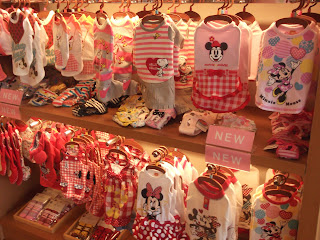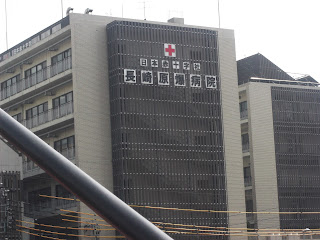In the late 1800's Nagasaki became a major shipbuilding city and was also a major port with Dutch and Portugese trading here. Mitsubishi Heavy Industries was one of the main contractors for the Imperial Japanese Navy and the harbour here was used as a docking point and the company also had a factory in Nagasaki. It is thought that an estimated 240,000 people lived in Nagasaki prior to the end of WWII.
On August 9th at 11:02am an American B-29 bomber plane dropped a second atomic bomb , called 'Fat Man' on Japan, this time on Nagasaki. As a result of this almost 74,000 died and just over 74,000 were injured, 6 days later Japan announced they had surrendered. Most of the city was destroyed by the blast and those who had survived were still suffering from the lack of supplies in the destroyed city.
Today Nagasaki is a beautiful city which has been rebuilt well. It has preserved historic parts of the city and has created a beautiful place for you to learn in depth about its history. Although we are here for six months and have plenty time to see the many sights, we want to do it all now! This weekend was dedicated to visiting the Atomic Bomb Memorial Hall, Atomic Bomb Museum and the Peace Park all which are only a ten minute walk from our apartment.
Firstly we went to the Memorial Hall which starts off outside where you walk around a large basin of water which represents the water which the people of Nagasaki prayed for after the atomic bomb. The idea is after walking around it you are to feel calm before entering the Hall which is underground.

These two pillars here which are in the basin of water, point in the direction of where the hypocentre of the atomic bomb is, 250 metres away. At nighttime the basin is light up by 70,000 lights which represent the number of people who had been killed by the Atomic Bomb by the December of 1945.
Inside the hall there are many colourful oragami cranes which represents hope and prayers for peace. When you are inside the hall it is strangely calm and peaceful, there are slideshows of pictures of those who died on a wall. In the rememberance hall there are 12 pillars and one tall pillar with shelves which hold the names of all those who died. When you are facing the shelves you are facing the hypocentre of the atomic bomb.
On leaving the hall you can go to the Peace Information Corner where you can listen to the stories of those who survived. Many people who did survive lost all some if not all of their family. The stories were incredibly sad as there were many children who were left without parents or who watched their parents die infront of them from burns.
 Afterwards we went on to the Atomic Bomb Museum which in the entrance had many more colourful oragami cranes. I decided to purchase an audio set so that i wasnt just wandering around looking at things without knowing what it was, it was very useful. I didnt take many pictures when inside the museum, it was very dark and some things didnt seem appropriate to take photo's of. There were many photographs of Nagasaki before and then after the bomb. A wall clock was found approximately 800 metres from the hypocenter its hands had stopped at the time of the explosion, 11:02am. There are various ornamental objects on show which were found during the clearing up process, things such as stacks of plates melted together and money which had also fused together. There were clothes on show which had been worn by victims on that day and you could see the marks from where they had been burnt or where pieces of glass had pierced their clothes. Before the bombing Nagasaki was home to one of the grandest cathedral's in Asia called Urakami Cathedral. Unfortunately it was almost completely destroyed but they managed to salvage some statues and also one wall which survived. Here they found rosary beads which had melted together.
Afterwards we went on to the Atomic Bomb Museum which in the entrance had many more colourful oragami cranes. I decided to purchase an audio set so that i wasnt just wandering around looking at things without knowing what it was, it was very useful. I didnt take many pictures when inside the museum, it was very dark and some things didnt seem appropriate to take photo's of. There were many photographs of Nagasaki before and then after the bomb. A wall clock was found approximately 800 metres from the hypocenter its hands had stopped at the time of the explosion, 11:02am. There are various ornamental objects on show which were found during the clearing up process, things such as stacks of plates melted together and money which had also fused together. There were clothes on show which had been worn by victims on that day and you could see the marks from where they had been burnt or where pieces of glass had pierced their clothes. Before the bombing Nagasaki was home to one of the grandest cathedral's in Asia called Urakami Cathedral. Unfortunately it was almost completely destroyed but they managed to salvage some statues and also one wall which survived. Here they found rosary beads which had melted together. 
The reconstructed Urakami Cathedral.
It tells of how at the time nobody knew of the effects radiation had and the relief workers who were sent from other towns unfortunately picked up radiation poisoning aswell. Some symptoms came around within days which included sickness and the loss of hair, visable burns whereas others did not appear until several years later and included Leukemia and Cancer.Inside here you are also able to sit down to read and listen to peoples accounts of that day, many of which are not very nice to listen to. The museum overall is an extremely interesting place to go as it exposes the damage of which an Atomic Bomb is capable of. The hospital in which iam working in here was originally the Nagasaki Japanese Red Cross Genbaku Hospital which is The Atomic Bomb Hospital but it was turned into a general hospital sometime in the 1980's.
 Afterwards we went off to the Peace Park which is covered in sakura so it is really beautiful and it also has a part of a wall from the original Urakami Cathedral. Here is the huge peace statue and also various other statues in rememberance to the people who died. Its a very lovely peaceful park and will be a great place to go and chill out in the summer. Overall it was a very interesting place and it was good to learn more about Nagasaki's history.
Afterwards we went off to the Peace Park which is covered in sakura so it is really beautiful and it also has a part of a wall from the original Urakami Cathedral. Here is the huge peace statue and also various other statues in rememberance to the people who died. Its a very lovely peaceful park and will be a great place to go and chill out in the summer. Overall it was a very interesting place and it was good to learn more about Nagasaki's history.
Unfortunately i cannot upload all of my pictures on to my blog as it would take too long but i have put them onto my facebook page so take a look there if you would like to see more :)
 original part of Urakami Cathedral which survived.
original part of Urakami Cathedral which survived. 
























 the girls i shared with in tokyo.
the girls i shared with in tokyo.




